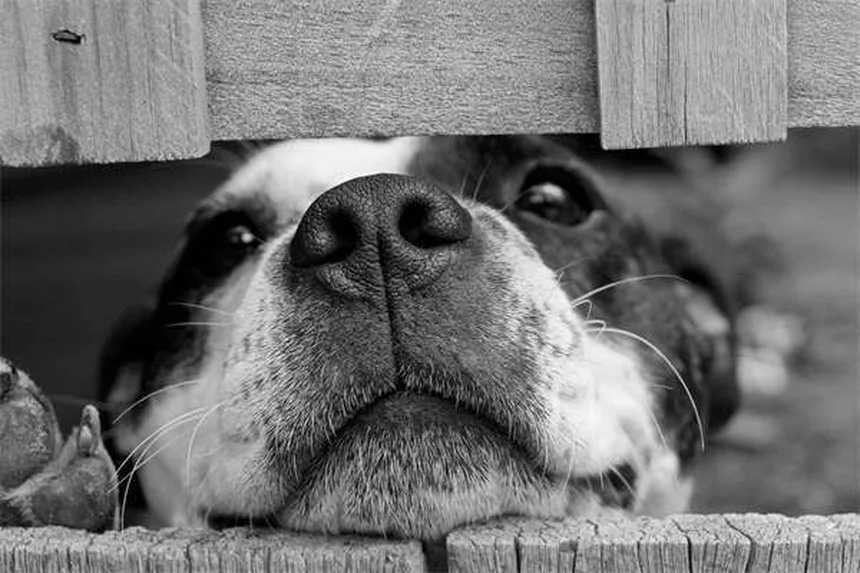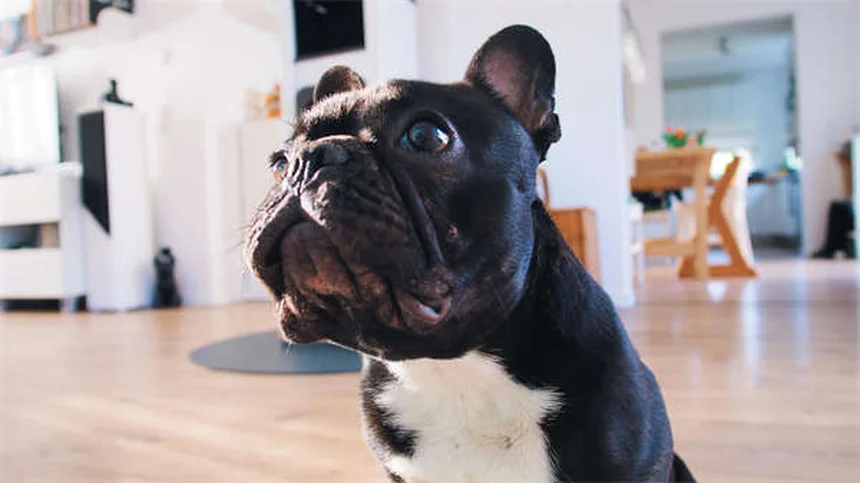What are the most common types of cancer in dogs? The answer is: Lymphoma, mast cell tumors, melanoma, hemangiosarcoma, and osteosarcoma top the list. As a dog owner myself, I know how scary it feels when you discover a lump on your furry friend. Here's the good news - not all lumps mean cancer, but you should always get them checked. In this guide, we'll break down everything you need to know about canine cancer in simple terms. You'll learn how to spot warning signs, understand treatment options, and most importantly - how to give your pup the best care possible. Let's get started!
E.g. :Hypertrophic Cardiomyopathy in Cats: Symptoms, Treatment & Prevention
- 1、Understanding Canine Cancer: A Dog Owner's Guide
- 2、Spotting Trouble: Cancer Symptoms in Dogs
- 3、What Causes Cancer in Dogs?
- 4、Diagnosing Canine Cancer
- 5、Treatment Options for Dogs With Cancer
- 6、Living With a Cancer Diagnosis
- 7、Prevention and Early Detection
- 8、Beyond the Basics: Exploring Canine Cancer Further
- 9、Financial Considerations You Can't Ignore
- 10、The Science Behind Canine Cancer Research
- 11、Life After Cancer: What to Expect
- 12、Building Your Support Network
- 13、FAQs
Understanding Canine Cancer: A Dog Owner's Guide
The Reality of Dog Cancer
Let me tell you something that might surprise you - 1 in 4 dogs will develop cancer in their lifetime. That number jumps to 50% for dogs over 10 years old. Now, before you panic, remember that not all lumps and bumps mean cancer. Many are benign growths that grow slowly and don't spread.
But here's the thing - cancerous masses are different. They're like those annoying neighbors who won't stop multiplying and spreading everywhere. These malignant tumors can grow fast and move to other parts of the body. The speed and spread depends on the cancer type, which brings me to...
Common Cancer Types in Dogs
Ever wonder why your vet gets so excited about checking your dog's mouth during exams? Oral melanoma is one nasty customer - especially when it appears in the mouth. These tumors often cause bad breath and appetite loss, making them easy to mistake for dental issues.
Now let's look at some other common offenders:
| Cancer Type | Common Locations | Aggressiveness |
|---|---|---|
| Hemangiosarcoma | Heart, liver, spleen | Very aggressive |
| Lymphoma | Lymph nodes | Responds well to chemo |
| Mast Cell Tumor | Skin | Varies from mild to severe |
Spotting Trouble: Cancer Symptoms in Dogs
 Photos provided by pixabay
Photos provided by pixabay
The Obvious Signs
Some symptoms wave red flags you can't miss. We're talking about:
- New lumps or bumps that appear overnight
- Swelling that won't go down
- Wounds that refuse to heal
- Unexplained bleeding
But here's a question for you: Did you know that enlarged lymph nodes can be a cancer symptom? Those little bean-shaped bumps under your dog's jaw or behind their knees might tell an important story. Always get them checked!
The Sneaky Symptoms
Cancer can be a master of disguise. Some signs are so vague you might blame them on aging:
Your once energetic pup now tires easily. Their appetite isn't what it used to be. Maybe they're drinking more water or having accidents in the house. These could all point to cancer - or they might just mean your dog is getting older. That's why vet visits are crucial!
What Causes Cancer in Dogs?
Factors We Can't Control
Sometimes cancer just happens. Age plays a big role - just like humans, older dogs face higher risks. Genetics matter too. Some breeds are prone to specific cancers, like Golden Retrievers and hemangiosarcoma.
 Photos provided by pixabay
Photos provided by pixabay
The Obvious Signs
Here's where you can make a difference. UV exposure can cause skin cancers, especially in short-haired, light-colored dogs. Chemical exposures from lawn treatments or household cleaners might contribute too. And guess what? Secondhand smoke affects dogs just like people!
Diagnosing Canine Cancer
The Initial Exam
When you bring your dog in for a lump, your vet will start with hands-on detective work. They'll feel the mass, check its size and mobility, and look for other suspicious areas. But here's the kicker - no one can diagnose cancer by look or feel alone.
Testing Options
Your vet might suggest a fine needle aspirate - think of it as a quick biopsy using a tiny needle. For more detailed info, they may recommend surgical biopsy under anesthesia. Bloodwork and imaging like X-rays or ultrasound help see if cancer has spread.
Did you know staging determines treatment options? It's like mapping the enemy's territory before planning battle strategy. More advanced cases might need CT scans or bone marrow tests.
Treatment Options for Dogs With Cancer
 Photos provided by pixabay
Photos provided by pixabay
The Obvious Signs
For localized tumors, surgery often comes first. The goal? Remove all cancerous tissue with clean margins. Some cancers like mast cell tumors might need wide excision - meaning the surgeon takes extra tissue around the tumor.
Chemotherapy and Radiation
Now, I know what you're thinking - "Chemo sounds scary!" But here's the good news: dogs handle chemo much better than humans. We use lower doses focused on quality of life. Most dogs don't lose their hair (except some breeds like Poodles).
Common chemo drugs include:
- Doxorubicin - works well for lymphoma
- Carboplatin - often used for bone cancer
- Palladia - targets mast cell tumors
Living With a Cancer Diagnosis
Daily Care Tips
Cancer treatment isn't just about meds. You'll want to:
Keep your dog comfortable with soft bedding. Offer small, frequent meals if appetite is poor. Monitor for treatment side effects like nausea or diarrhea. And most importantly - keep up the cuddles and playtime!
Making Tough Decisions
How do you know when it's time to say goodbye? Consider the Five Freedoms:
- Freedom from hunger and thirst
- Freedom from discomfort
- Freedom from pain and disease
- Freedom to act naturally
- Freedom from fear
Your vet can help assess quality of life. There's no perfect answer, but focusing on your dog's comfort and happiness guides the way.
Prevention and Early Detection
Reducing Risks
While we can't prevent all cancers, we can stack the odds in your dog's favor:
Spay female dogs before their first heat to dramatically reduce mammary cancer risk. Limit sun exposure for light-colored dogs. Keep up with annual vet exams - early detection makes all the difference!
At-Home Checks
Make monthly "lump checks" part of your grooming routine. Run your hands over your dog's body, feeling for anything new or changing. Pay special attention to:
- Mouth and gums
- Armpits and groin
- Between toes
- Ears and eyes
Remember - when in doubt, check it out! Your vet would rather see ten harmless lumps than miss one dangerous one.
Beyond the Basics: Exploring Canine Cancer Further
The Emotional Impact on Pet Parents
You know what they don't tell you in the puppy manuals? Cancer diagnosis hits you like a ton of bricks. One minute you're planning your dog's birthday party, the next you're researching oncologists. It's okay to feel overwhelmed - I've been there too.
Let me share something personal. When my golden retriever Max was diagnosed, I spent nights crying into his fur while he happily chewed his toy, completely unaware. Dogs live in the moment, and we can learn from that. Your vet isn't just treating your dog - they're supporting you through this emotional rollercoaster.
Alternative Therapies Worth Considering
Ever heard of acupuncture for dogs? It's not just some hippie nonsense - many veterinary hospitals now offer it alongside traditional treatments. These needles help with pain management and nausea from chemo. Pretty cool, right?
Here's a quick comparison of some complementary therapies:
| Therapy | Best For | Typical Cost Per Session |
|---|---|---|
| Acupuncture | Pain relief, nausea | $60-$120 |
| CBD Oil | Anxiety, inflammation | $30-$100/month |
| Massage Therapy | Circulation, mobility | $50-$80 |
Financial Considerations You Can't Ignore
Understanding Treatment Costs
Here's the elephant in the room - cancer treatment ain't cheap. But before you panic, let's break it down. A single chemo session might run $200-$500, while radiation therapy could cost $2,000-$6,000 for the full course. Surgery? That's often $1,500-$5,000 depending on complexity.
But wait - did you know pet insurance can cover up to 90% of these costs if you have it before diagnosis? That's why I always tell new puppy parents to get insurance while their dog is young and healthy. Trust me, future you will send thank you cards.
Creative Ways to Fund Treatment
When my neighbor's dog needed treatment, they started a GoFundMe that raised $8,000 in two weeks. People love helping pets! Other options include:
- CareCredit (medical credit card)
- Nonprofit grants like The Magic Bullet Fund
- Payment plans with your vet
- Community bake sales (who can resist puppy-themed cupcakes?)
The Science Behind Canine Cancer Research
Exciting New Treatments on the Horizon
Guess what's making waves in veterinary medicine? Immunotherapy - treatments that boost the dog's own immune system to fight cancer. Some clinics already offer this, and the results are promising. We're talking about fewer side effects and better quality of life during treatment.
Another breakthrough? Targeted therapies that attack cancer cells while sparing healthy ones. These drugs identify specific mutations in tumors. It's like having a smart bomb instead of carpet bombing the whole body with chemo.
How Clinical Trials Help Dogs and Humans
Here's something mind-blowing - dogs in cancer trials help both species. Because dogs get similar cancers to humans and live in our environment, their responses help human research too. It's a win-win!
Want to get involved? Universities like Colorado State and UC Davis often need participants. Your dog could access cutting-edge treatments while advancing science. Just ask your vet about local opportunities.
Life After Cancer: What to Expect
The Joy of Remission
Nothing beats hearing "your dog is in remission." But what does that actually mean? It's not necessarily "cured" - more like "we can't detect cancer right now." You'll still need regular checkups, but celebrate this victory! I've seen dogs enjoy years of happy life post-treatment.
Pro tip: Create a "remission bucket list" with your pup. Favorite park visits? Extra belly rubs? That steak dinner they always eye? Now's the time!
When Cancer Returns
Let's be real - sometimes cancer comes back. But here's the thing: recurrence doesn't mean game over. Many dogs respond well to second rounds of treatment. The key is catching it early through those follow-up visits your vet keeps nagging about.
I'll never forget Mrs. Johnson's 14-year-old beagle who beat lymphoma twice. That stubborn old pup outlived two of his dog buddies! Every dog's journey is unique, so stay hopeful while being realistic.
Building Your Support Network
Finding Your Tribe
You know what's surprisingly comforting? Talking to others going through the same thing. Online groups like "Canine Cancer Support" on Facebook have thousands of members sharing tips, vet recommendations, and virtual hugs.
Local support exists too. Next time you're at the vet clinic, ask about cancer support meetups. Sharing stories over coffee (and dog treats) makes the road less lonely.
When to Seek Professional Help
Here's a question we don't ask enough: "Is this grief normal?" If you're losing sleep, can't focus at work, or feel constantly anxious about your dog's health, consider talking to a therapist. Many specialize in pet-related grief and stress.
Remember - caring for yourself helps you care for your dog better. You can't pour from an empty cup, as my grandma used to say.
E.g. :10 Early Warning Signs of Cancer in Dogs - SASH Vets
FAQs
Q: How can I tell if my dog's lump is cancerous?
A: Here's the honest truth - you can't tell just by looking. As a vet, I've seen harmless lumps that look terrifying and dangerous cancers that appear innocent. The key is to watch for changes. Does the lump grow quickly? Is it irregularly shaped? Does your dog lick or scratch at it? These are red flags. But remember - even smooth, slow-growing lumps need professional evaluation. We typically do a fine needle aspirate (quick needle test) or biopsy to know for sure. The sooner we catch cancer, the more treatment options we have!
Q: What are the first signs of cancer in dogs?
A: Some signs hit you over the head - like a visible lump or bleeding. But others sneak up on you. Pay attention to these subtle changes: sudden weight loss without diet changes, decreased energy levels, bad breath (could indicate oral tumors), or new difficulty eating. I once had a patient whose only symptom was drinking more water - turned out to be a bladder tumor. Trust your gut - if something seems "off" about your dog's behavior or appearance, schedule a vet visit.
Q: Are certain dog breeds more prone to cancer?
A: Absolutely. While any dog can get cancer, some breeds have higher risks. Golden Retrievers often develop hemangiosarcoma. Boxers are prone to mast cell tumors. Large breeds like Great Danes frequently get bone cancer. But here's what many owners don't realize - small dogs aren't immune. Dachshunds commonly get mammary tumors, and Scottish Terriers have high bladder cancer rates. If you have a predisposed breed, ask your vet about early screening options.
Q: How successful is cancer treatment in dogs?
A: Success depends on the cancer type and stage when caught. Some cancers like lymphoma have 80-90% remission rates with chemo. Others like hemangiosarcoma are tougher. The big difference from human treatment? We focus on quality of life first. Most dogs handle chemo remarkably well - they don't lose hair (except poodles!) and rarely get sick. Surgery can cure some localized tumors completely. New treatments like immunotherapy are showing promise too. The bottom line? Don't assume the worst - many dogs live years after diagnosis with proper care.
Q: Can I prevent my dog from getting cancer?
A: While we can't prevent all cancers, we can dramatically reduce risks. Spaying before first heat cuts mammary cancer risk by 90%. Avoiding secondhand smoke helps. Using dog-safe sunscreen on light-colored pups prevents skin cancers. But the #1 prevention tool? Regular vet check-ups. Catching cancer early makes all the difference. I recommend senior dogs (7+ years) get exams every 6 months. And always, always investigate new lumps immediately - it could save your dog's life.



Discuss